Included are clips and some stills of a 6 1/2 year old, 31.4Kg, male neutered Labrador Retriever presented for a worsening cough over two weeks duration. Radiographs revealed a more generalized interstitial lung pattern with small dispersed areas revealing alveolar patterns. Heart appeared normal in size to slightly enlarged. Blood work was uneventful. Ultrasound was used to determine if cough was cardiogenic or related to lung pathology. I didn’t observe anything drastic on echo?Bradycardia and low normal heart rates were observed. Allometric scaled LA suggested slight enlargement while the LAD:AO was 1.8. Lung scan revealed increased B lines on both sides of thorax with a few small subpleural areas of lung consolidation. On the left side some shred signs were also observed. What are your thoughts.

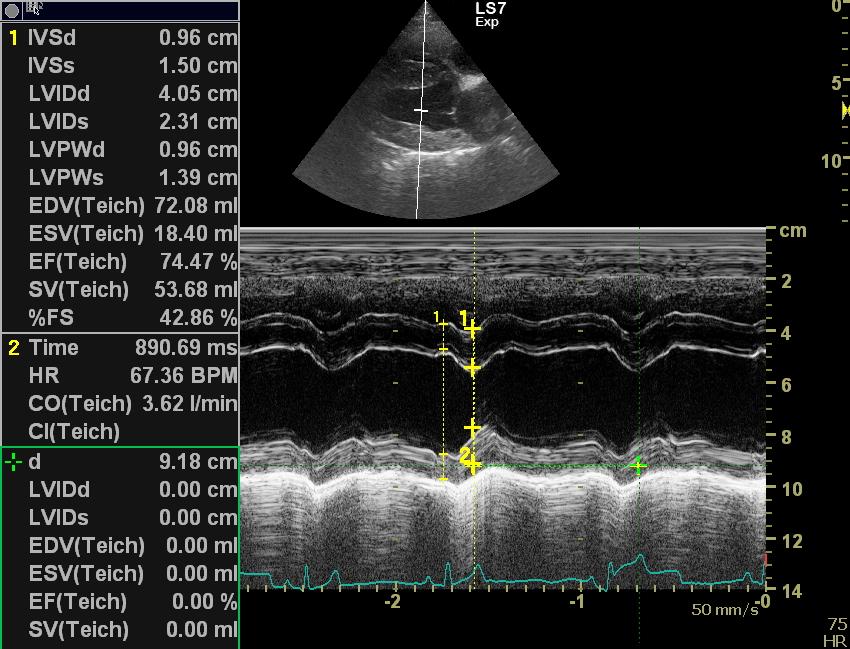

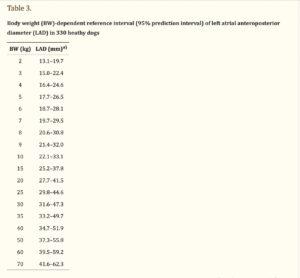
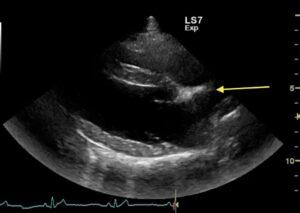
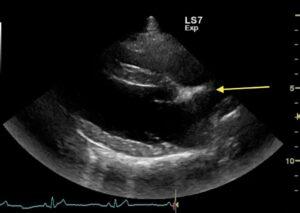
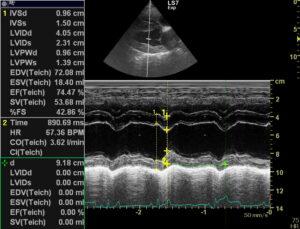
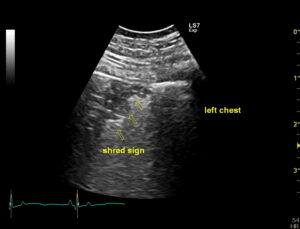
12 responses to “Cardiogenic cough versus lower airway disease”
We are also addressing these types of things at the sonopath summit next month in Santa Monica and there are 5 spots left when i checked last. https://sonopath.com/sonopath-2023-summit/
Thanks! both the LA:AO and the LAD:AO were normal. Just the RSA LA measure was equivocal but function was fine. Bradyarrythmia most likely due to lung pathology.
Are there normals for canine LAD or do you just use <2 for normalcy. After your “Tricks of the trade” lecture I’d be all over that FNA lol. I’d love to attend the California symposium but that trip isn’t in the cards this summer. Love to purchase the recorded version or be able to join virtually. I’m also looking forward to getting down to your office for some training and have a go with the Ninja ultrasound.
Dan
LAD is weight dependent and toy breeds and yorkies should be < 2.8-3 cm... bichons around 3.2-3.4 max roughly but go my that atrial septal deviation sign. If you have a solid "brick" and the AS is in line with the IVS and not deviated the LA is normal liek the image i arrowed up above. The june boon and heart based LA views are easy to create LAE when its not enlarged and less consistent so when it all shakes out its the LA max that's the key. Moreover if there are clinical signs that are cardiogenic the LA will be well beyond normal and not just slightly.
Thanks again. No septal bowing. I didn’t know there was a LAD scale for dogs as there is for cats. Dr.Modler, like yourself likes the brick for repeatable left atrial measures. He uses the LAD :AO ratio. If less than 2 he considers left atrial size to be normal.
Yes peter and i think alike and collaborate often. There is an LAD scale/index and there are those that use it fiscally and those that do what described above. Ill post it here just have to dig for it 🙂
Note the breed variation./conformation really messes wiht consistency here… ie a doberman la/ao june boon or heart base vs a KCS… both breeds are really inconsistent but LA max very consistent and easy to assess in followup. Not all breeds dilate their LA in the same fashion or direction.
Marchesotti et al 2019
https://www.ncbi.nlm.nih.gov/pmc/articles/PMC6895628/
and here is the table by weight
Notice there is significant range of normal so an upper end of normal may be big on one breed and not in another…. hence going to the AS deviation concept really helps. In addition, usually when clinical for B2/B2+ then at least 2 if not all 3 LA measurements are excessive which is why all our SDEP protocol and mobile techs/drs always measure all 3 la/ao heart base, june boon and la max. But we sink our teeth into la max most of the time when reading telemed and how we address the case but all 3 are there for any flavor of specialist or gp evaluating.
Hope this helps
Hope this helps
Sure does! It’s good to ask questions lol.
Thanks a bunch!!
From a clinical point of view the fact that the dog was showing bradycardia/low normal heart rate is indicative of lung disease rather than cardiac disease, unless there is an SA or AV block but then would not expected pulmonary changes.
Thanks Dr.Lobetti!! Sorry I didn’t see your comment. That was my thoughts about this case too.. Overall, I thought it was a good excercise/case for evaluation of a cough.